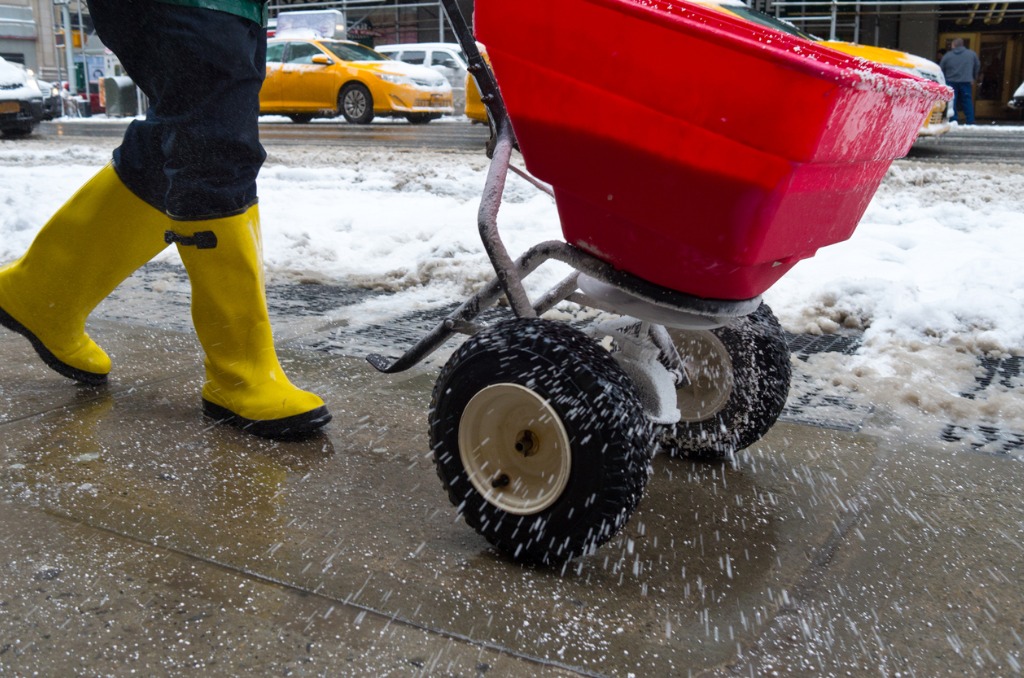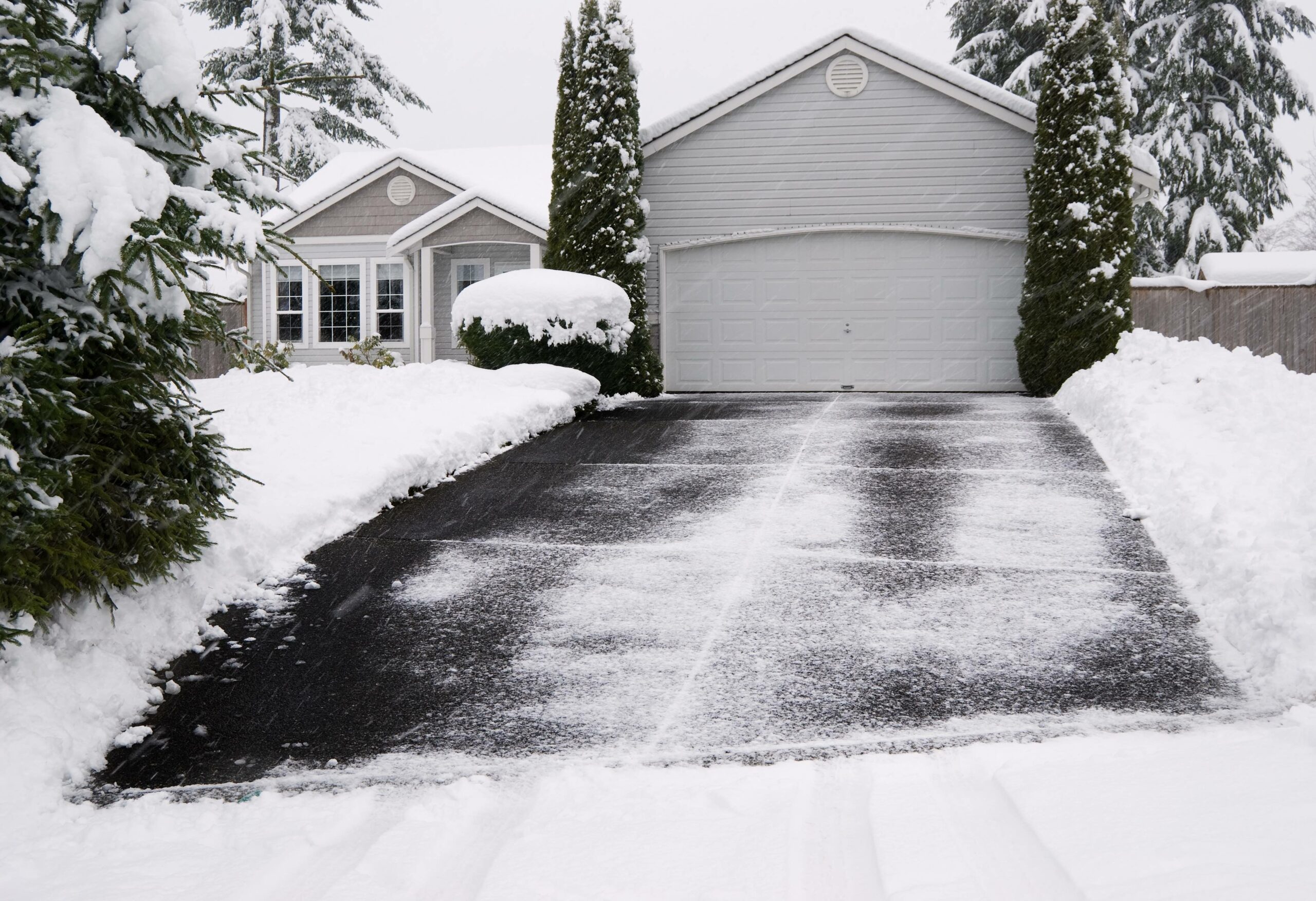

We may earn revenue from the products available on this page and participate in affiliate programs. Learn More ›
Even a small amount of solid ice can be treacherous on the walking and driving areas outside your home. Removing it with ice melt—a chemical product that is applied on surfaces to break down the bonds of ice—is an essential winter chore for many folks who live in cold, stormy climates. Ice melt creates cracks and flakes in ice and snow, making it safer to navigate and easier to remove altogether. But there are various kinds of ice melt products designed for different purposes and surfaces. Follow this guide when using ice melt for safe and effective removal of the slippery stuff.
DO consider the variety of options available.
There are many different kinds of ice melt products that are designed for different situations. Some come as a liquid formula while others may be pellets or granules. Some are made for specific surfaces or temperatures, and some are designed specifically for safe use around pets and children. Read product labels carefully to understand the features of each product and how it will work best for your situation.
DON’T confuse ice melt with rock salt.
Though both are used to melt ice, rock salt and ice melt are two different products. Rock salt is a mineral form of sodium chloride. Ice melt is made from a blend of chemicals, typically with a main active ingredient of sodium chloride. Ice melt is formulated to be fast acting, long lasting, and to work in the coldest of temperatures.
RELATED: Expecting Snow? Do These 7 Things ASAP
DO check the temperature rating.
Different ice melt products have been developed to work at different temperatures. If you live in an area where winter temperatures may plunge lower than 20 degrees Fahrenheit, read labels to be sure that you purchase an ice melt that functions effectively at that temperature.
DO consider the surface.
Ice can cover driveways, sidewalks, decks, and porches, which are all composed of different materials, such as concrete, asphalt, wood, and metal. Before applying, read and follow package instructions. Use the appropriate product for the surface, so you don’t mistakenly cause damage.

DON’T apply too much.
Applying excessive amounts of ice melt can do more harm than good. Too much ice melt can damage walkways, driveways, and even landscaping or indoor surfaces when tracked in. Excess use can contribute to environmental damage as well, via groundwater and runoff. Be sure to read and follow package directions for how much to use on your outdoor surfaces.

DO keep away from children and pets.
Some ice melt products contain chemicals that can be harmful if swallowed. The Poison Control Center receives calls each year from parents of children who have put ice-melting crystals in their mouths. Pets can also get into unsecured or unattended ice melt products. Typically, accidental ingestion does not cause serious problems, but there have been reports of the chemicals causing irritation in both children and pets.
DON’T track it into your house.
The chemical residue from ice melt can be tracked indoors, which can cause damage and make indoor surfaces slippery. To avoid tracking ice melt into your home, use floor mats both outside and inside of entrances. Some ice melt products are designed to minimize tracking while still working efficiently and effectively.
RELATED: We Cleared More Than 4 Feet Of Snow Testing the Best Electric Snow Shovels and Found 9 Top Options
DON’T wait until ice forms before you purchase.
It is smart to have a supply of ice melt on hand before a storm comes your way. In fact, ice melt works best if you apply it to outdoor surfaces before ice forms. Doing so will help prevent ice from bonding and will create channels in the ice, which will simplify ice removal.
